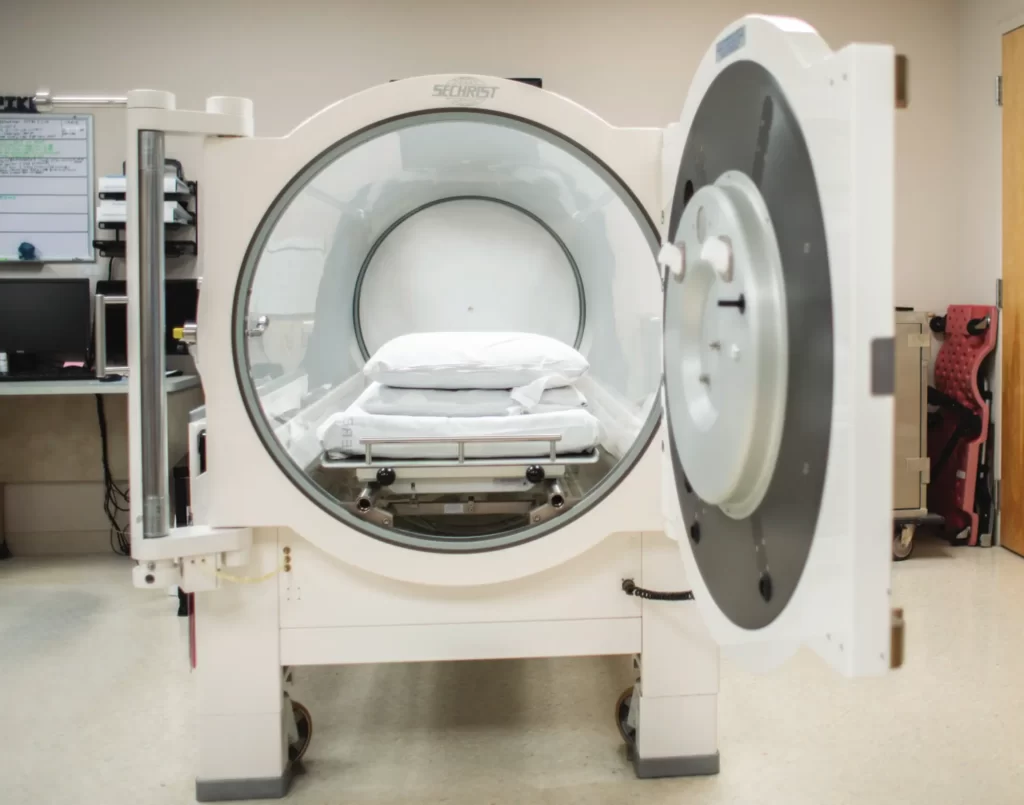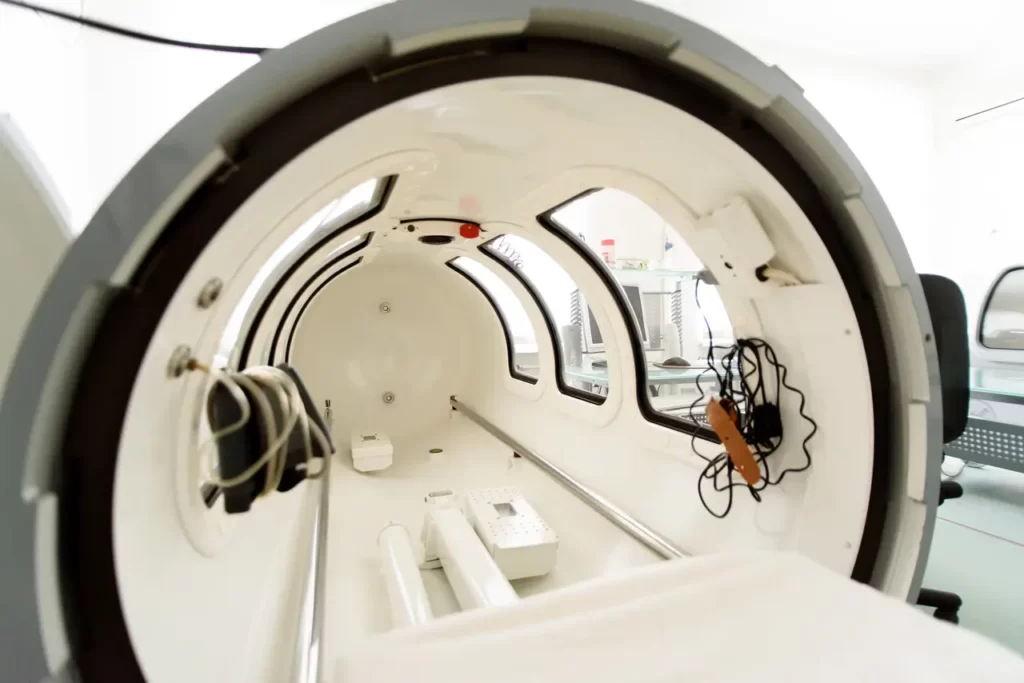Hyperbaric Oxygen Therapy
What is Hyperbaric Oxygen Therapy
1. Environment: Pressurized Chamber: The treatment takes place in a specially designed hyperbaric chamber where the atmospheric pressure is increased to levels higher than normal (typically 1.5 to 3 times the normal atmospheric pressure).
2. Oxygen Delivery: Pure Oxygen: Patients breathe 100% oxygen, which significantly raises the level of oxygen in their blood plasma.

How It Works

Increased Oxygen Delivery:
At higher pressures, more oxygen is dissolved in the blood plasma, enhancing oxygen delivery to tissues throughout the body, including areas with compromised blood flow.

Promotes Healing:
Enhanced Healing: Increased oxygen levels promote the growth of new blood vessels (angiogenesis), improve the function of white blood cells (enhancing infection control), and stimulate the production of growth factors and stem cells.

Reduces Swelling and Inflammation:
HBOT helps reduce swelling and inflammation, aiding in the recovery of injured tissues.
Indications for HBOT
1. Wound Healing:
- Chronic Non-Healing Wounds: Such as diabetic foot ulcers, venous leg ulcers, and pressure ulcers.
- Radiation Injuries: Tissue damage caused by radiation therapy, known as radiation necrosis.
- Infected Wounds: Particularly those with deep tissue infections like osteomyelitis (bone infection).
2. Acute Conditions:
- Decompression Sickness: Commonly known as “the bends,” affecting divers.
- Carbon Monoxide Poisoning: HBOT helps displace carbon monoxide from hemoglobin.
- Gas Gangrene: A severe bacterial infection.
- Crush Injuries and Compartment Syndrome: Where enhanced oxygen delivery can reduce damage and aid recovery.
Procedure
1. Preparation:
- Medical Evaluation: Patients undergo a thorough evaluation to ensure HBOT is appropriate for their condition.
- Patient Instructions: Guidance on what to expect, including the need to equalize ear pressure during the session.
2. Session:
- Duration: Each session typically lasts between 60 to 120 minutes.
- Frequency: The number of sessions varies based on the condition being treated, ranging from a few sessions to multiple sessions over weeks or months.
3. Post-Treatment:
- Monitoring: Patients are monitored for any adverse effects, such as ear pain or sinus discomfort.
Benefits
Enhanced Healing:
Improved oxygenation of tissues accelerates healing processes.
Infection Control:
Reduced Inflammation:
Tissue Regeneration:
Stimulation of growth factors and stem cells promotes tissue repair and regeneration.

Risks and Contraindications
- Barotrauma : Injury to the ears or sinuses due to pressure changes.
- Oxygen Toxicity : Rare but can occur with high concentrations of oxygen over prolonged periods.
- Claustrophobia : Discomfort due to being in an enclosed chamber.
- Contraindications : Certain conditions, such as untreated pneumothorax, certain implanted medical devices, may preclude HBOT. An evaluation by a provider will explore this treatment option in depth.
